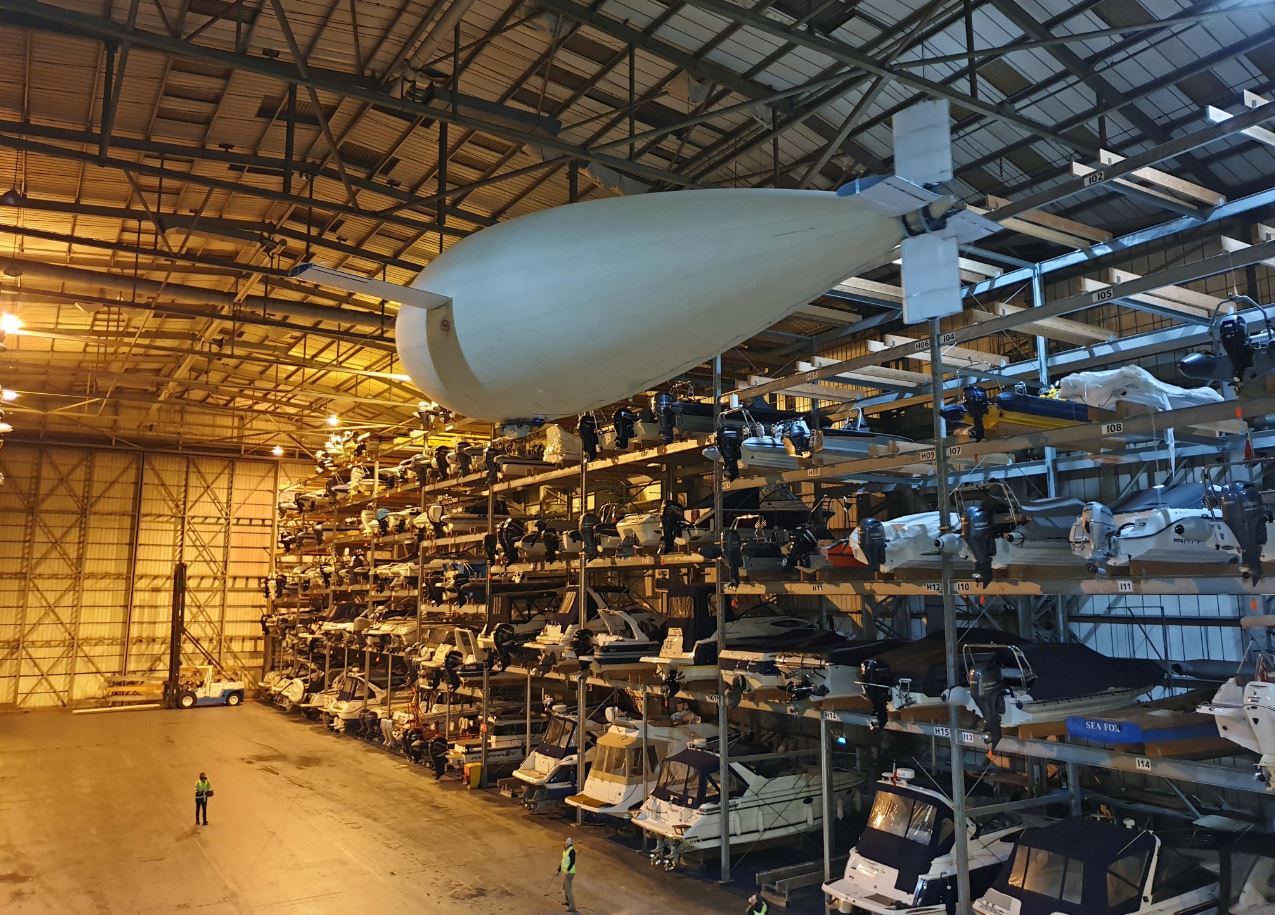UK team trials new ultra-endurance air vehicle
A group of UK experts has successfully flown the first ever large-scale aircraft powered by variable-buoyancy propulsion. The Phoenix is designed to repeatedly transition from being lighter than air to being heavier than air so thrust is generated to propel the craft forward.
The team behind the ultra-long endurance autonomous aircraft includes representatives from academia and industry. Andrew Rae, Professor of Engineering at the University of the Highlands and Islands Perth College UHI Campus, led the design of the aeroplane.
He explains: “The Phoenix spends half its time as a heavier-than-air aeroplane, the other as a lighter-than-air balloon. The repeated transition between these states provides the sole source of propulsion.
“The vehicle’s fuselage contains helium to allow it to ascend and also contains an air bag which inhales and compresses air to enable the craft to descend. This motion propels the aeroplane forwards and is assisted by the release of the compressed air through a rear vent.
“This system allows the Phoenix to be completely self-sufficient. The energy needed to power its pumps and valves is provided by a battery which is charged by lightweight flexible solar cells on its wings and tail.
“Vehicles based on this technology could be used as pseudo satellites and would provide a much cheaper option for telecommunication activities. Current equivalent aeroplanes are very complex and very expensive. By contrast, Phoenix is almost expendable and so provides a user with previously unavailable options.”
The prototype aeroplane, which is 15 metres long and has a wingspan of 10.5 metres, was flown successfully and repeatedly over a distance of 120 metres during indoor trials at the Drystack facility in Portsmouth in March. The test flight was the culmination of a three-year project to prove the viability of a variable-buoyancy powered aircraft.
The Phoenix team is now exploring collaborations with major manufacturers to take the technology to the next phase of development. The project has been part-funded by Innovate UK, the UK’s Innovation Agency, through the Aerospace Technology Institute.
View a video of the Phoenix trials
The University of the Highlands and Islands offers a range of aircraft engineering programmes and pursues research activities across the aerospace sector and in motorsport. The Perth College UHI Dunne Aeronautical Laboratory gives students access to state-of-the-art learning and research facilities in aerodynamics, propulsion and flight. These include a large flight simulator, gas-turbine rig and wind tunnels.
The partners involved in the Phoenix project are:
• Banks Sails (fuselage materials and manufacture)
• IQE (photovoltaic cells)
• Stirling Dynamics (flight control system)
• TCS Micropumps (pumps and valves, computer aided design, and flight control actuators)
• The Centre for Process Innovation (project management and photovoltaic cells)
• The Manufacturing Technology Centre (flight control system and hardware testing)
• The National Composites Centre (carbon-fibre wing and tail structures, wing skins, and the gondola)
• University of Bristol (carbon-fibre wing and tail structures, wing skins, and the gondola)
• Newcastle University (reversible hydrogen fuel cell)
• University of Sheffield (wind-tunnel testing)
• University of Southampton (rechargeable battery)
• University of the Highlands and Islands (platform and flight control surface design)
